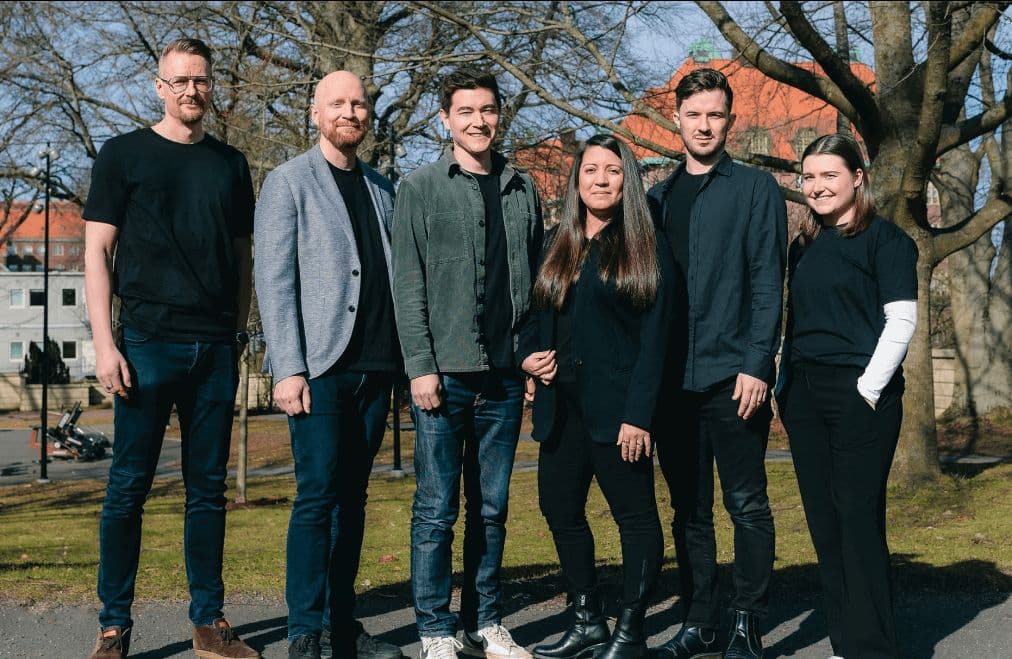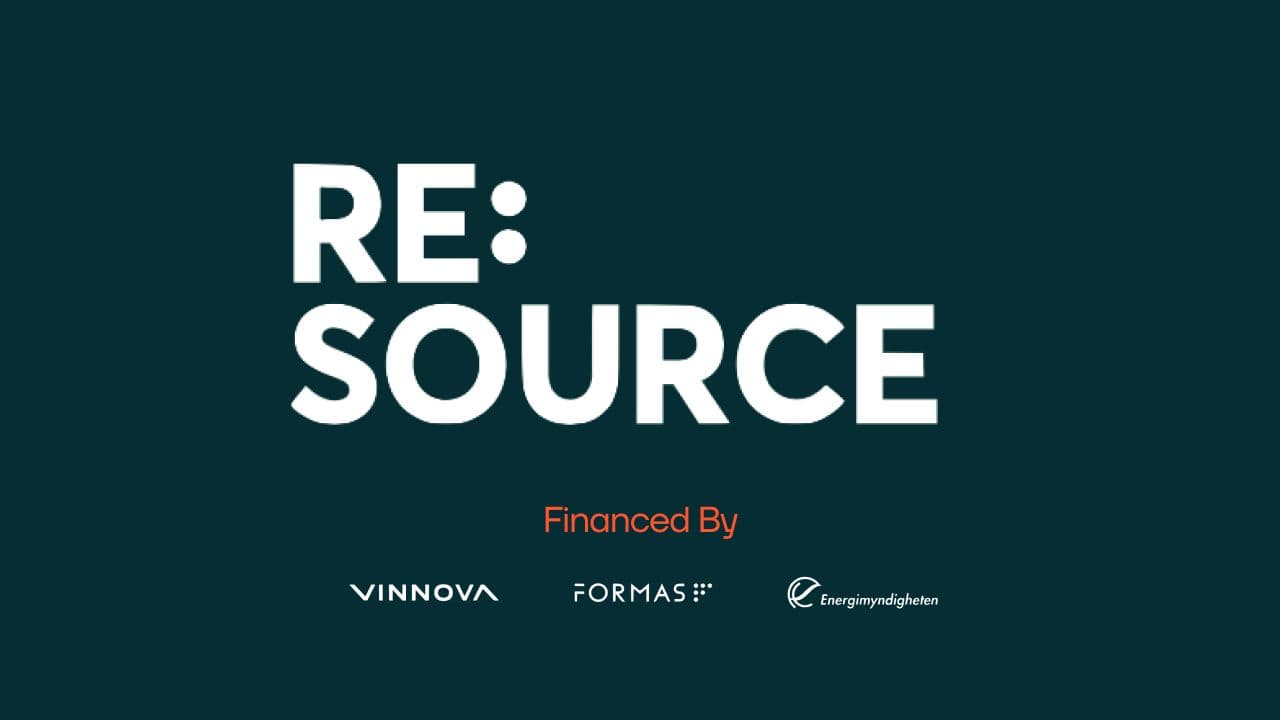Hi, I’m Anna Sheridan, DREV’s Communications Specialist, and I’m excited to kick off our Perspectives series. In this series, I'll share conversations with the people behind DREV, starting with someone who inspires me daily: Arelys Sosa, DREV's CEO and Co-Founder.
Something you may not know is that I was the second person to meet Arelys when she moved to Sweden. When she pitched the idea of DREV to me, I was in awe of her passion and determination to make a difference. This interview is more than a story about a company – it’s a glimpse into the people and values that drive DREV forward.
Can you share a bit about your background and what led you to the battery industry?
I was born and raised in Barcelona, Venezuela, about 300 kilometers from Caracas, where I earned my degree in industrial maintenance engineering. My career began at 17 in Venezuela's oil and gas industry—the country's largest sector and one of the world's biggest industries. During my university years, I worked during the day and attended classes at night. It was quite challenging, but I enjoyed it, approaching everything with a clear vision. This experience opened doors to work with Fluor Daniels, one of the world's largest engineering, procurement, and construction (EPC) companies. In 2011, I joined the project control team, where we managed a $3.6 billion project in the Dominican Republic—building the Pueblo Viejo gold mine, largest gold mine in Latin America. I was one of the youngest global expats on the project. With Fluor, I also supported an $11 billion project in Argentina: the Pascua Lama gold mine, situated in the Andes Mountains at approximately 4,500 meters above sea level. During my time at Fluor Daniels, I met my husband, Fernando. In 2013, we relocated to the main office in Sugar Land, Texas, where we had our two boys.
Soon after, my husband was offered a job at Tesla, leading us to become one of the first Tesla families to relocate to Reno, Nevada, in January 2015—introducing us to the clean energy industry and joining a mission for a sustainable future. My experience working on complex, large, and multicultural projects led me, in August 2017, to join the original team at Panasonic Energy of North America, where I played a key role in building Tesla's Gigafactory 1 in Nevada, supporting the room turnover and the installation and commissioning of 10 out of 14 assembly lines to ramp up cell production for the Model 3.
My journey from oil and gas to mining and, ultimately, electric vehicle batteries sparked a deep passion for innovation and sustainable energy solutions. We spent eight years in Reno, Nevada, a place that I now consider home. In 2022, my husband was offered a job at NOVO Energy, which led us to move to Sweden with our two children and dog—and our journey in the battery industry continues.
The battery industry isn’t new—it’s the scale and ambition that are new. That’s what makes this work so exciting: we’re building solutions for a future that’s evolving faster than ever."
Arelys Sosa
CEO and Co-Founder, DREV
How did your experiences at Tesla’s Gigafactory 1 shape your perspective on the battery industry and inspire the founding of DREV?
While I was working at Panasonic, I had the opportunity to be a part of not only the construction but also the operations while working in the Facility department as a project manager. We often forget that the battery industry isn't new – what's new is the size, scale, and production output in this new factory setup. When building the factory, the first of its kind, we did not foresee that the facility's scale would introduce new challenges.
Once operations began, I noticed that the tools we had available weren't adapted to safely and efficiently remove battery scrap metals from production areas. These scrap metals are in powder form in a battery factory and look like fine black dust, but they include critical metals like lithium, cobalt, manganese, nickel, and copper, and are generated as a byproduct of the production process. By witnessing this challenge, I was exposed to a critical gap in the industry. This experience inspired me to create DREV, where we develop innovative technology and processes to address these unique challenges.
This experience at Gigafactory 1 profoundly shaped my perspective on the battery industry. It taught me that scaling up production introduces new and often unforeseen challenges, but it also offers opportunities for innovation.
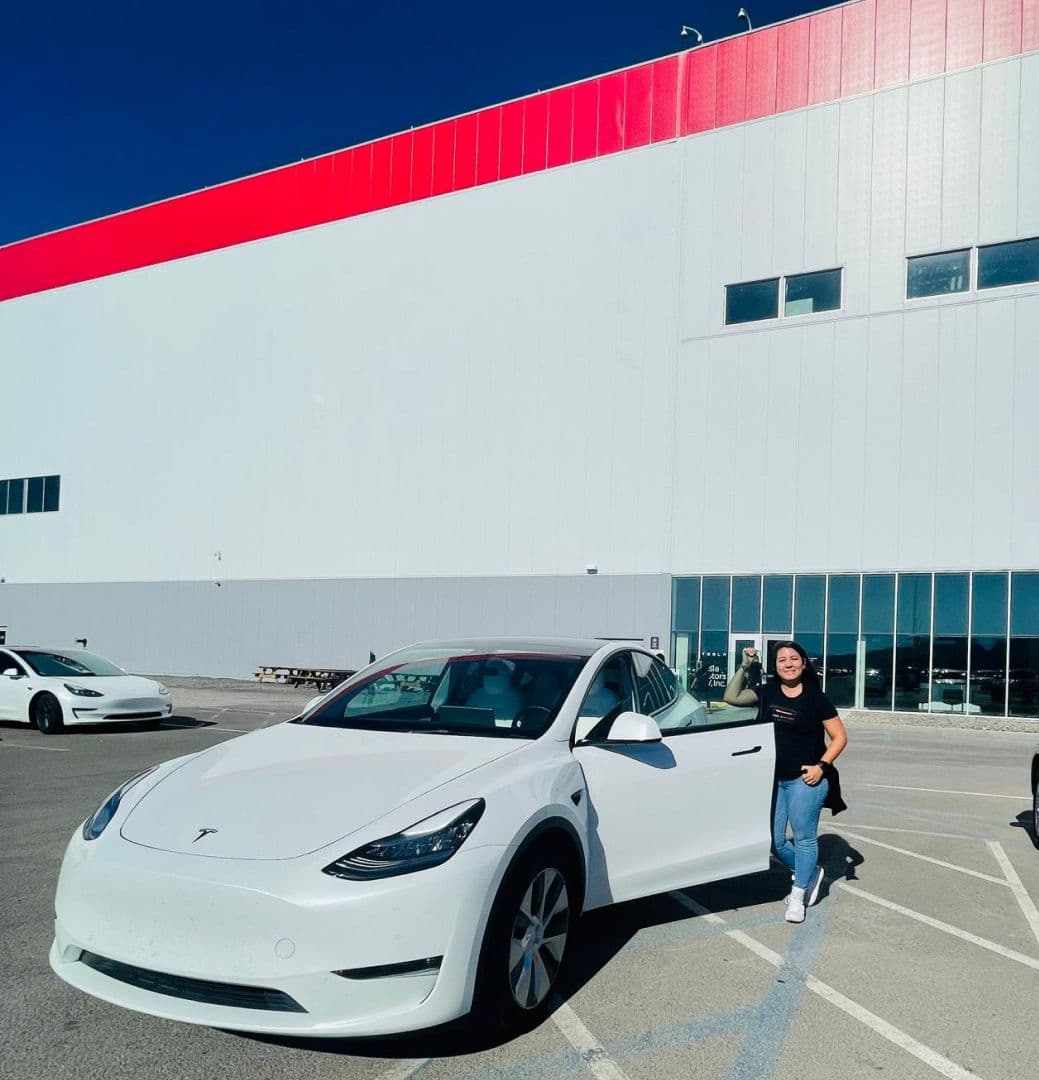
Tesla's Gigafactory 1, July 2022
Can you describe the moment when you realized that the battery industry needed disruptive technologies like the ones DREV is developing?
After relocating to Sweden, I consulted many of my former colleagues from Tesla and Panasonic, who are building gigafactories worldwide. I kept asking them, "How are you going to clean and maintain the production areas?" Their answers were all similar—they were using processes adapted from industries like semiconductor and pharmaceutical manufacturing, which have very different needs. Nobody had a solution specifically tailored to the battery industry. I took it upon myself to innovate and adapt to these growing needs.
This drive led me to start DREV, with a mission to develop the necessary tools to safely manage these valuable materials, protecting processes, people, and the planet.
When I realized that the current processes for handling the copious amounts of battery scrap metals generated during production weren't adapted to the industry's needs, I couldn't stop thinking about it. The novelty of these factories lies in their scale—many are larger than the Pentagon—and they require more sustainable solutions. These metals, borrowed from the earth, are finite resources, yet they can be recycled indefinitely if managed properly. However, they're at high risk of being wasted if we don't take action now.
Coming from Venezuela, a country with the largest certified oil and gas reserves, I’ve gained a deep understanding of the finite nature of natural resources. Once fossil fuels are burned, they cannot be reused or recycled. This realization has shaped my perspective on sustainability and the importance of preserving resources for future generations. By supporting alternative clean energy solutions like batteries—which can be recycled and reused—we reduce CO2 emissions and help conserve critical resources at every level.
How does DREV’s technology uniquely position the company to address the challenges of modern gigafactories and lead in the rapidly growing battery industry?
DREV's technology is designed specifically for the new, massive gigafactories that are revolutionizing the transportation and energy sectors. These facilities are producing batteries on a scale we’ve never seen before, and with that comes unique challenges. Managing operations at this size and creating circular value chains requires innovative solutions, and that’s where DREV comes in.
Our technology is built to handle the scale and complexity of these operations while ensuring the safe collection of valuable materials and protecting workers from potential harmful materials. DREV’s technology not only applies to battery manufacturing but also supports recyclers and refiners, who are essential to closing the loop in this industry. By enabling efficient recovery and reuse of critical materials, we’re helping to create a truly circular economy for batteries.
It’s about more than just solving today’s challenges—we’re thinking ahead. We’re anticipating future needs in areas like insurance and regulations, so we can create the essential products and provide the strategic services that will help this industry scale sustainably.
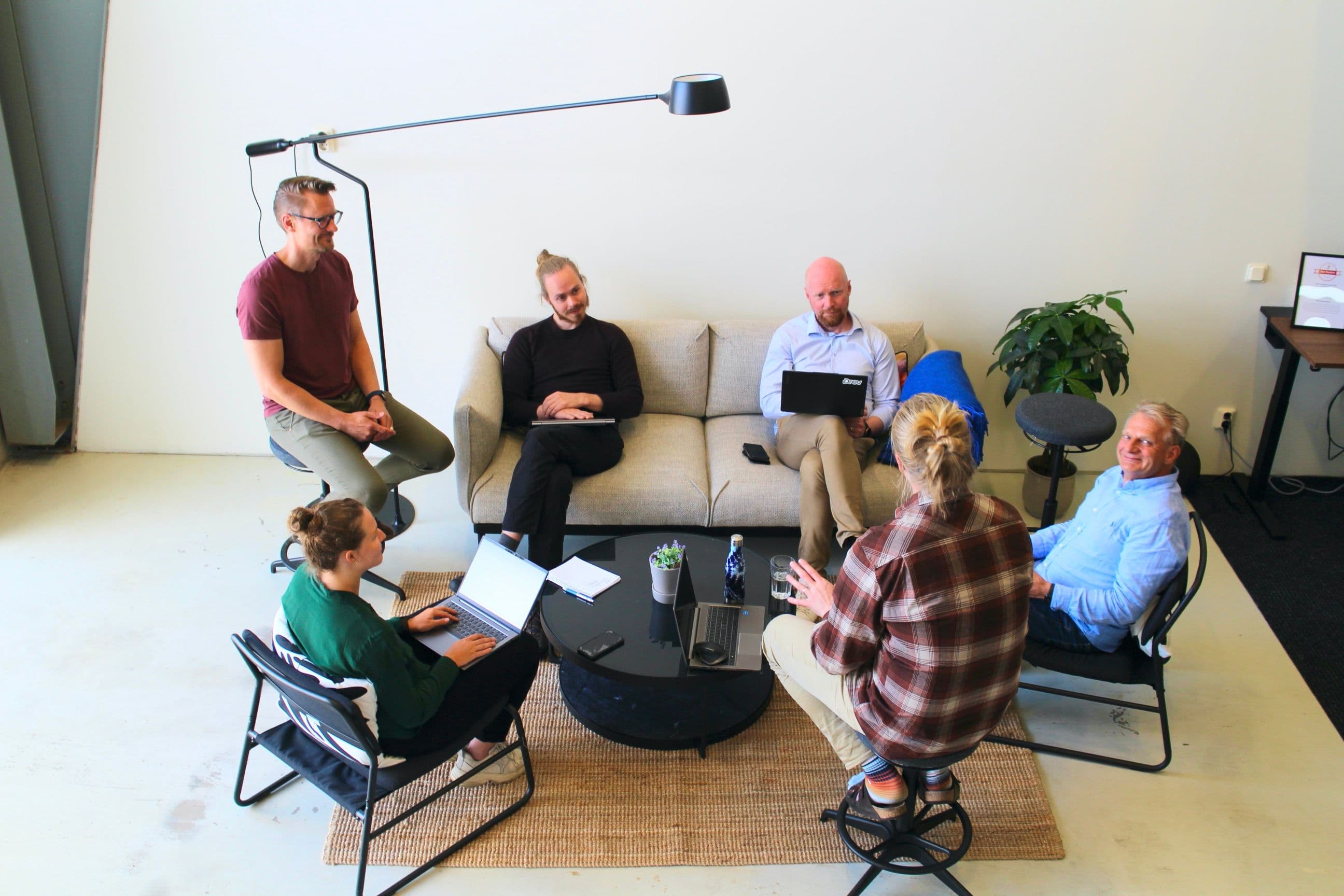
DREV's Tech Team, June 2024
What challenges have you faced in scaling DREV, and how have you drawn on your experience in the industry to overcome them?
For me personally, adapting quickly to a new country while developing a new technology has been quite a journey. Taking on this type of heavy responsibility requires a lot of discipline and perseverance—two skills I developed over time through triathlons and Ironman races. On a broader scale, educating stakeholders about the challenges in the battery industry has been critical. Many factories are still under construction and have not yet faced the realities of mass production. From the start, I’ve emphasized the importance of being prepared for the moment when these factories need solutions to support their operations. Staying informed about emerging technologies, maintaining a clear vision for the future, understanding the investment climate, and knowing the process and requirements for each growth stage (pre-seed, seed, series A, etc.) of a company are essential. These strategies help us adapt quickly, set achievable milestones, and stay ahead while developing solutions in a timely manner, as this is a critical challenge—and safety can’t wait.
The battery industry is exciting yet demanding, involving key advancements such as improving charging infrastructure, scaling recycling facilities, and reducing dependence on overseas raw materials. Investors are often concerned about these major changes, and addressing their feedback during fundraising requires resilience and faith in our mission. From my experience, accomplishing something truly complex isn’t just about motivation—it’s about unwavering willpower and commitment to the mission.
In summary, scaling DREV and securing funding have been significant challenges. However, I’m proud of what we’ve achieved over the past 21 months. My experience and network from Panasonic and Tesla, coupled with support from the startup ecosystem in Sweden, have been invaluable. We’ve succeeded in achieving complex milestones step by step by staying focused on innovation, applying for grants, building a solid network, and attracting advisors and investors who believe in our vision and support our journey.
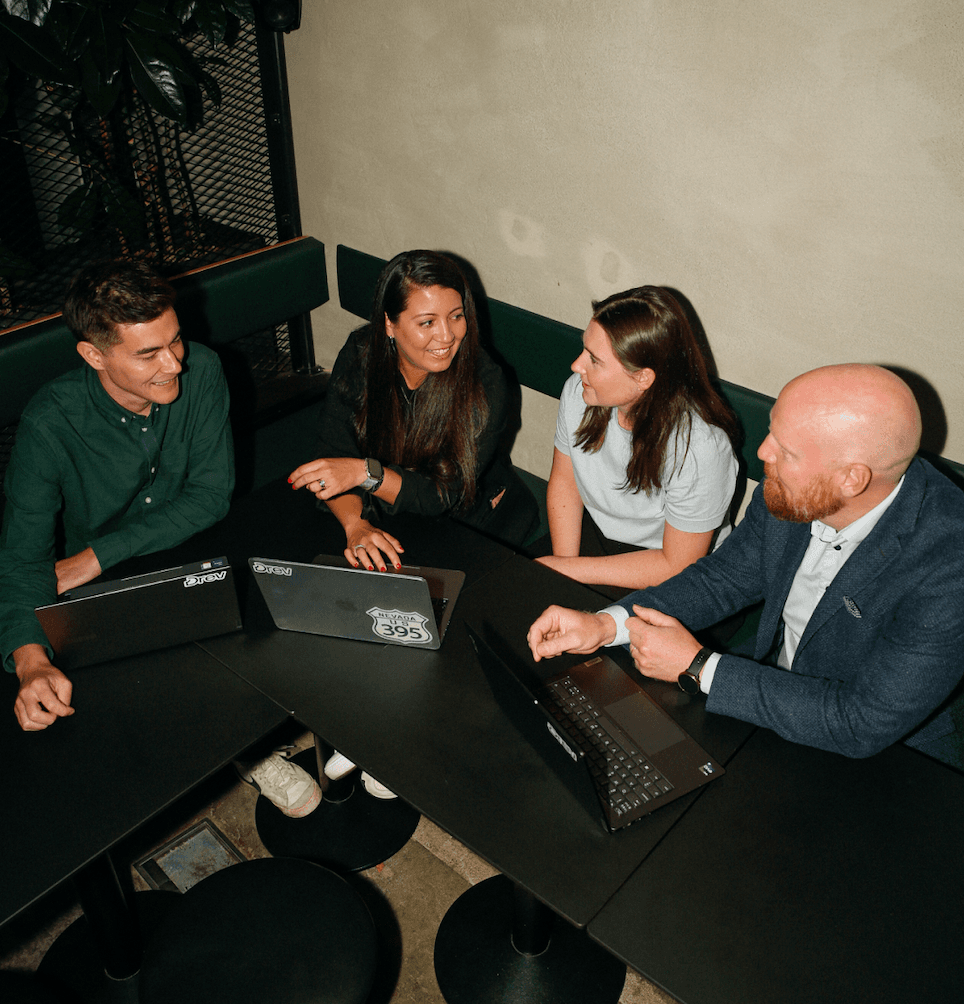
DREV's Founding Team
How does your leadership approach reflect the values of innovation and sustainability that are central to DREV?
My leadership style is influenced by the values of innovation, transparency, integrity, courage, and collaboration. I believe in creating an environment where my team feels empowered to push boundaries and think creatively.
This collaborative and forward-thinking approach has been key to our progress and will continue to guide us as we grow. Knowledge-sharing and transparency are core values at DREV, where we learn and help each other grow. Each team member brings unique skills that I am constantly learning from, and by sharing our knowledge, skills, and network, we can all grow in our roles to drive DREV forward.
This collective approach ensures that our commitment to innovation and sustainability is deeply embedded in everything we do, leaving a legacy that transcends any single individual.
At DREV, leadership is about collaboration. Each team member brings unique skills, and by sharing knowledge, we grow stronger together. That’s how we drive innovation and leave a lasting legacy."
Arelys Sosa
CEO and Co-Founder, DREV
What qualities do you believe are essential for a leader a rapidly evolving industry, and how do you embody these qualities at DREV?
Adaptability, resilience, and curiosity are essential qualities for a leader—skills I've come to value through my experiences in dynamic, multicultural teams. At DREV, these traits are particularly crucial given the rapid pace of change and high stakes in our fast-growing industry. Two of the core values I hold closest to my heart are action and execution—they drive me to tackle challenges and seize opportunities without overthinking.
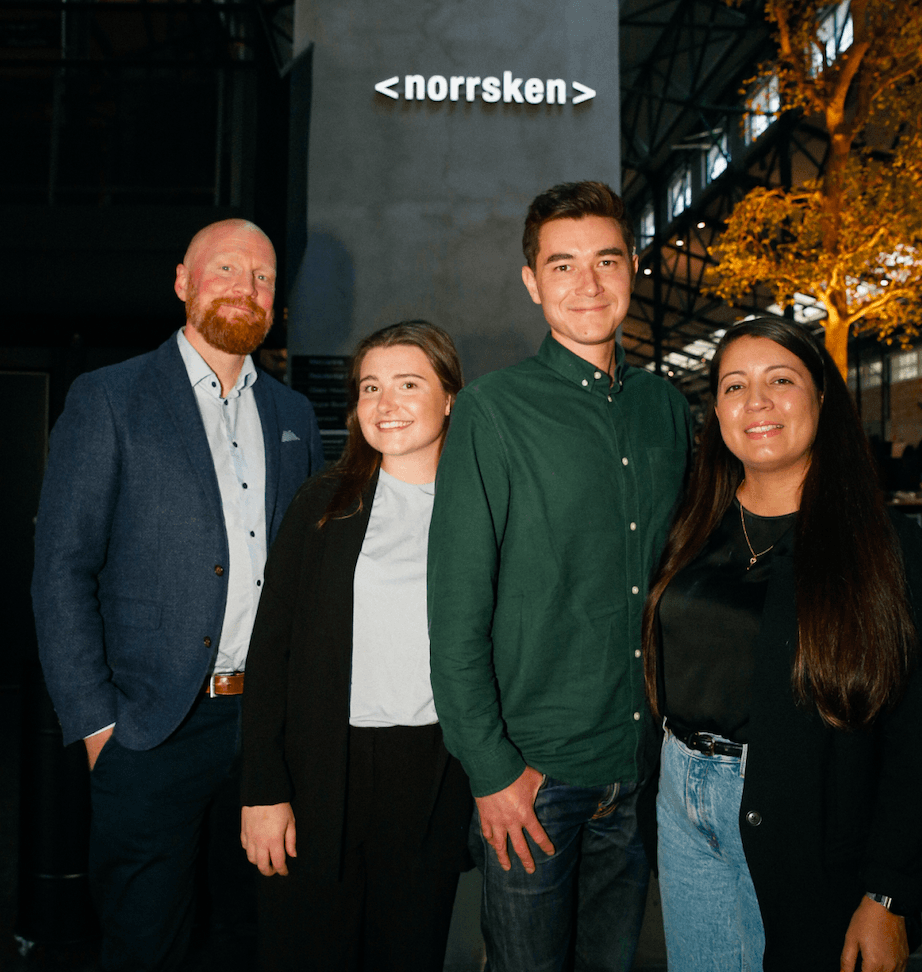
What is the story of DREV?
DREV's story began during a lunch with my husband at NOVO Energy in Lindholmen, one of Gothenburg's innovation hubs. That day, I noticed a colorful building that turned out to be one of Chalmers University's campuses. This moment sparked my curiosity, leading me to connect with their innovation office and attend Chalmers Venture Day in 2022, where I found the inspiration to bring my idea to life.
From there, our journey has been one of resilience, collaboration, and support. Early guidance from Drivhuset helped me pitch the idea to Anna Sheridan and then to Kent Moore, who were two of the few people I knew in Sweden and are now two pillars of support for me. They both joined the mission and have played significant roles. Together, we began building DREV step by step: developing our business plan, refining our pitch deck, seeking soft funding, and joining the local innovation community at the Stena Center. Through his network, Kent helped us find Thomas Tingelöf, our CTO and my Co-Founder. This was a pivotal moment—Thomas had been on a similar journey before and shared our passion for clean energy. From day one, he was ready to start building, helping us develop our proof of concept.
I’m particularly grateful to have someone like Thomas on our team. With his PhD in Chemistry and extensive professional experience, joining a startup from the ground up was a courageous decision and a huge commitment—one that I deeply value and admire.
When I moved to Gothenburg, founding DREV was not part of my original plan. However, I believe providing a solution to a challenge that could impact millions of people and support an industry I believe in is not only a responsible decision but also an obvious one."
Arelys Sosa
CEO and Co-Founder, DREV
Our chairman of the board, Jan Burenius, saw DREV's potential from the very beginning and has been one of our biggest supporters. He also brought Elina Åkerlind to the board, who has been an incredible support since day one. I’m also incredibly grateful for the encouragement and guidance we’ve received from Ryan Melsert and Evan Horetsky—industry experts who inspired me to take action with confidence. Metra Horetsky, Nora Bavey, and Thea Messel were our very first main investors who took the risk and have been pivotal to DREV’s rapid growth. Last but not least, Fernando Sosa (my husband) encouraged me to start this journey, even though it meant a big change for our family dynamic. We’ve always been accustomed to tough moves and significant transitions. Also, I will always feel grateful for Adrian Clarke, who was the one who brought us to Gothenburg.
We recognize that contamination control is a challenge faced not only in battery production but also in other high-tech industries like solar panel manufacturing and ITO production. I believe our solution, which is opening a new market, has the potential to be applied to these industries as well. Something we’ve noticed is that tackling this challenge at a rapid pace requires a solution from within the industry itself, and that’s where I feel our main contribution and competitive advantage lie. Being pioneers is always scary because IP protection is key, but at the same time, paving the way for a multi-billion-dollar market is incredibly rewarding—not just financially, but also on a sentimental level, knowing we’re contributing to the future of an industry that is revolutionizing the world.
Our journey has been shaped by the incredible support of organizations, and investors such as Unconventional Ventures, Almi, Vinnova, VGR, Swedish Energy Department, Stena Center, Business Sweden,Yuncture, SEB Green Tech, Venture Cup, Connect Region Väst, TECHARENA, Norrsken Accelerator program, and EIT Manufacturing. We’ve also been fortunate to attract exceptional advisors and investors like Maurizio Ramia, Scott Mortimore, Felipe Wigren, Daniel Sjöholm, Bengt Steneby, David Prentell, Rasmus Haahr, Rahand Nawzar, and Dean Christopher—who joined us right after founding the company and continue to support us to this day.
With amazing support from across the globe, we’ve built something meaningful and are excited about what lies ahead.
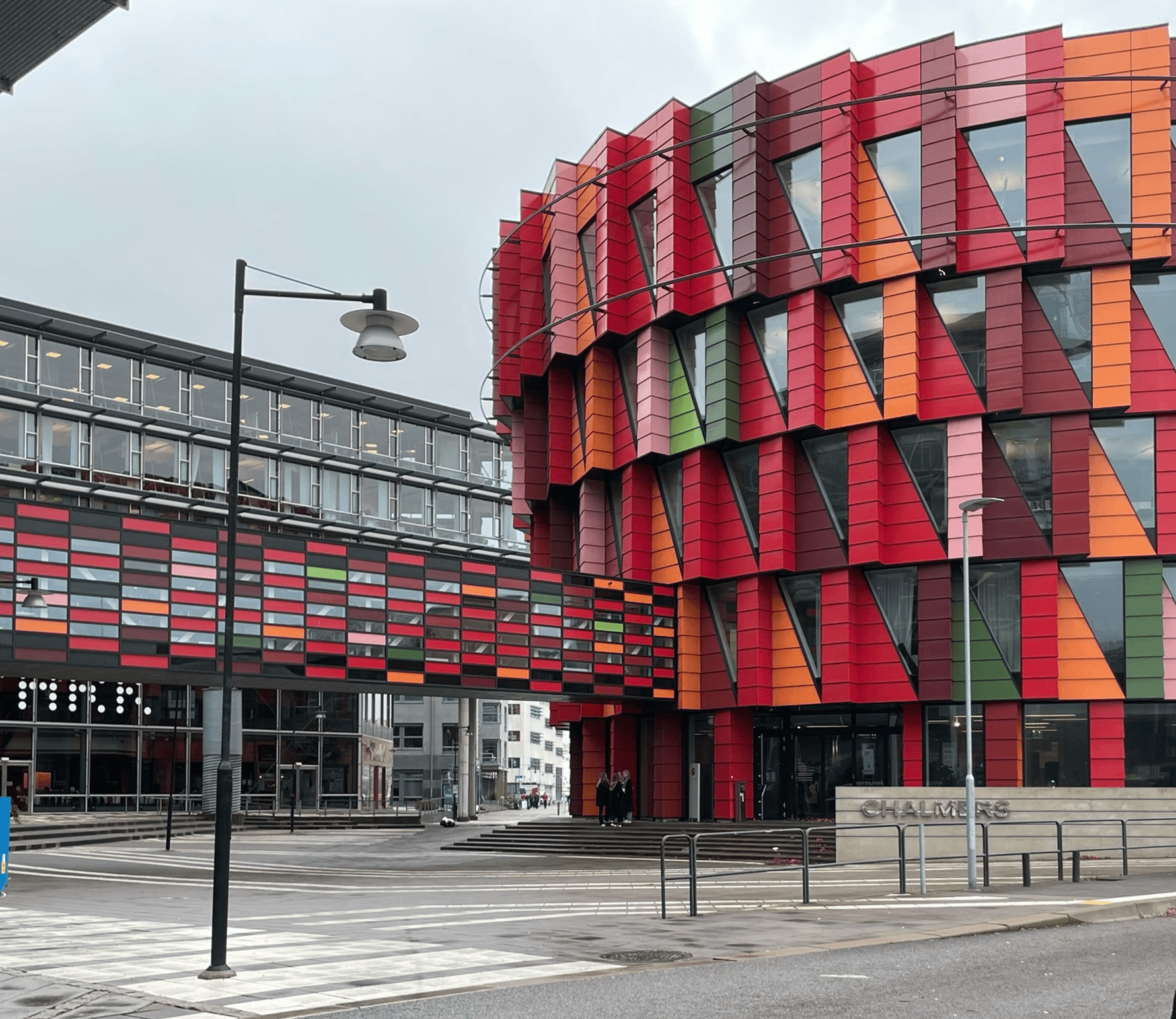
Chalmers University Campus, Lindholmen
Balancing the demands of running a startup with personal life is challenging. How do you maintain that balance?
Balancing work and family as a CEO is challenging—I personally don’t like to put that pressure on myself, especially when running a startup with 24/7 demands. While achieving a perfect work-life balance is unrealistic, I prioritize time for myself and my family. Activities like traveling, spending time with my kids, and walking my dog, Coco, help me recharge and stay focused.
I also find ways to blend work and family time. For instance, I’ve taken my kids on trips to the U.S., allowing me to spend quality time with them while also helping them feel connected to our DREV journey. During one of the trips, they joined me and the team for a tour of Tesla’s Gigafactory 1—it was special because they used to visit it to see their father during its construction when they were younger. My entire family is fully invested in supporting my role as CEO. In a sense, family and friends become non-financial investors, cheering us on and offering their perspectives. My team has even had the privilege of staying at some of my friends’ houses and meeting my U.S. community, experiencing this incredible support firsthand.

What drives your passion for innovation? And what advice would you give to an aspiring entrepreneur?
My passion for innovation comes from the potential to make a real difference and do things better. The work we do at DREV has the power to protect people—a significant contribution—mitigate potential environmental damage, safeguard critical resources, and support the global transition to sustainable energy. This mission motivates me day and night. When things get rough, being able to visualize the result and the impact fuels my commitment. I am dedicated to ensuring that DREV plays a key role in driving the industry forward.
My advice to any aspiring entrepreneur is to take action when you see a problem and find a supportive community that encourages and pushes you to innovate and take risks. By speaking up and sharing your ideas, you’ll discover like-minded individuals who want to join your mission. Don’t be afraid to take ownership of a problem or ask for help when you need it. There will be many ups and downs, but staying focused on your vision and being open to learning are essential. Starting a company is indeed a journey, and the experiences you gain along the way are invaluable.
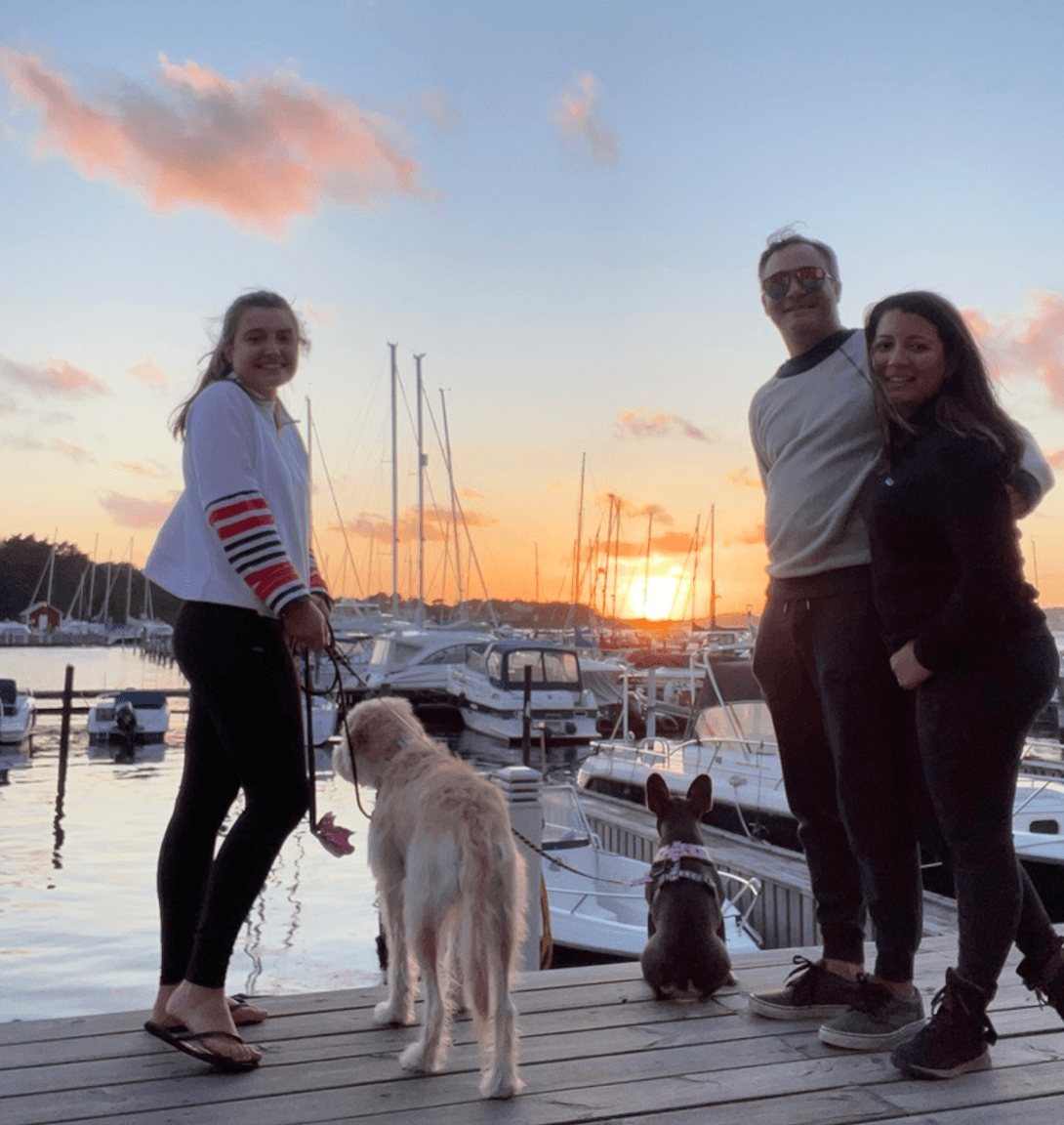
Anna, Fernando, and Arelys, August 2022



